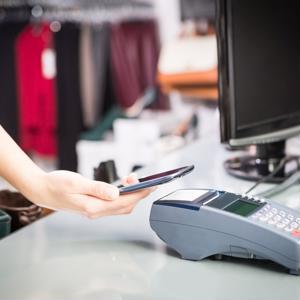Detailing the first 48 hours of Apple Pay

On Monday, October 20, Apple released iOS 8.1, an updated version of its latest mobile operating system. With it came a number of new features and adjustments to the iOS 8 platform, but none were more notable than the launch of Apple Pay. Now, users with either an iPhone 6 or iPhone 6 Plus can update to iOS 8.1 and use Apple Pay at a number of participating retailers.
To get set up, users have to register a credit or debit card with their phone and take proper measures to verify that it's their card. For example, Bank of America has an Apple Pay registration department set up and users are required to call to verify that they indeed mean to attach their debit or credit card with their phone. Once this is done, they can begin to use their phone at stores such as Walgreens and Whole Foods, as well as restaurants like McDonald's. All three are early adopters of Apple Pay and went live with their respective systems on the 20th.
Forbes contributor Mark Rogowsky downloaded iOS 8.1 as soon as it was available and immediately set up Apple Pay on his iPhone. Two days later, he detailed his first 48 hours with the service. In his piece, he talked about his experience at the various places he shopped with his phone. While some places like Whole Foods and McDonald's were seamless, others such as Target and Walgreens were not. The former does not have NFC payments set up yet and Rogowsky had to use the in-store app to pay, which he said is still "a mess." Walgreens made him use the interface on the payment terminal, something Apple Pay users were told they didn't have to do.
He also lamented the logistics of having to tap his bulky iPhone to pay, which may require adjustments to POS infrastructure to accommodate in the future. But, being that it was only the first 48 hours of the service's existence, Rogowsky was overall pleased with the technology.
"So in two days, Apple Pay worked nearly everywhere it was supposed to and mostly worked well," he wrote. "There are some ergonomic issues that are going to be hard to solve, I'd say. It's awkward pressing the Touch ID while tilting the phone. It seems like Apple's NFC placement, while probably correct, isn't always real-world friendly. Mostly, though, that's something people will acclimate to and I'm sure waving the Apple Watch over a terminal will get popular quickly among Apple Pay fans."
Merchants understand the very real need to accommodate Apple Pay if they are going to succeed in the future. Everyone from renowned technology analysts to Bill Gates have praised Apple Pay and highlighted its potential to change the payments industry. As a more convenient and secure payment option, its only a matter of time before this method becomes more of the standard than an outlier used by those in the know with technology. It's to be expected that as the market and technology mature, new regulatory measures pertaining to this form of payment processing will manifest. It's up to merchants to adapt to the changing payments landscape.